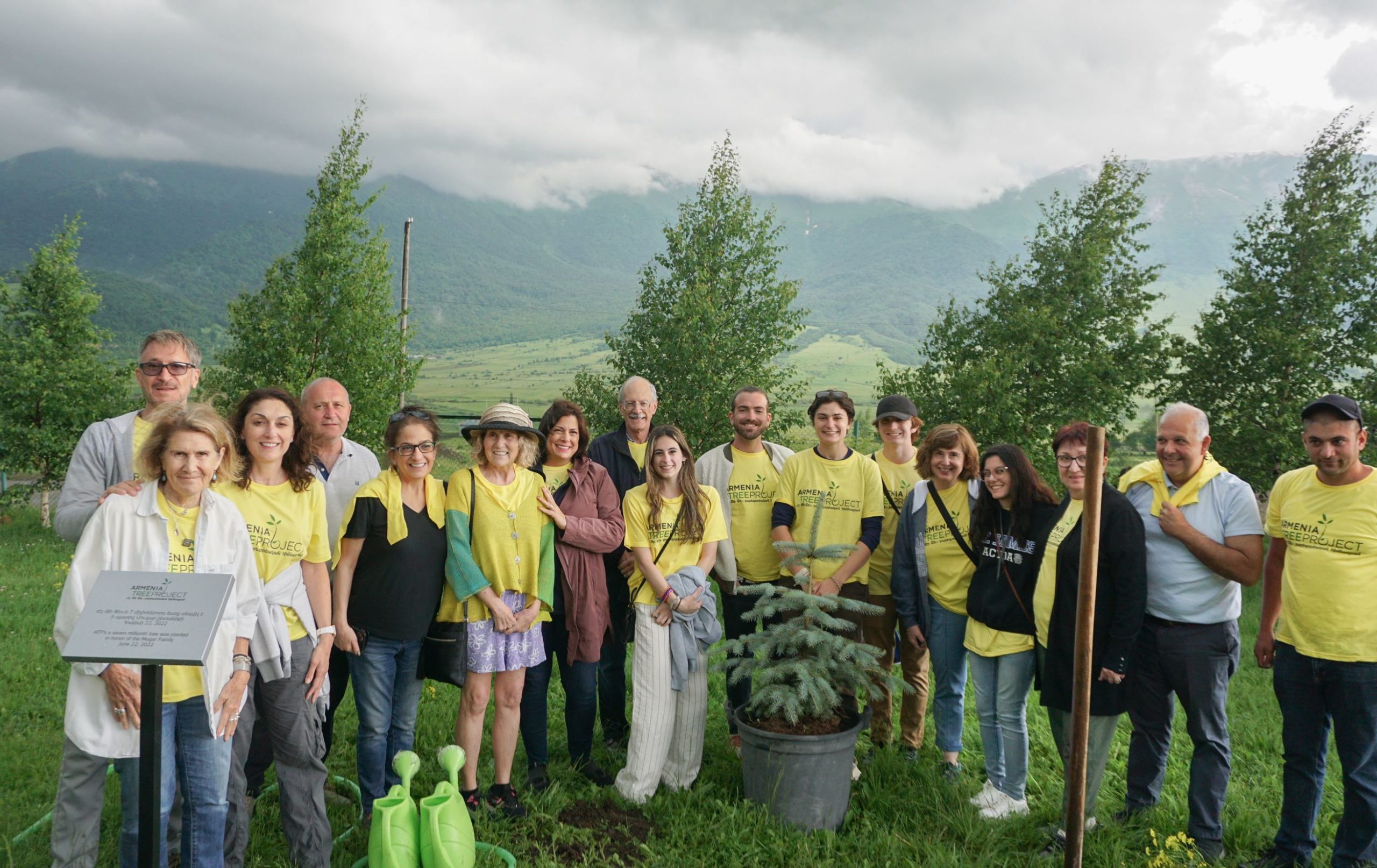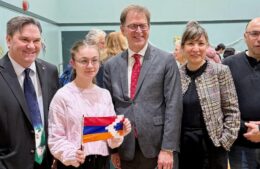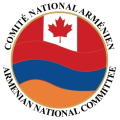ATP Tops Spring Planting Season with 7 millionth Tree in Armenia
- (0)

Armenia Tree Project (ATP) celebrated another milestone, planting seven million trees since its inception in 1994. The symbolic seven millionth tree was planted together with Founder Carolyn Mugar, Executive Director Jeanmarie Papelian, ATP’s Board of Directors with ATP Armenia Tour guests on June 22nd at the Michael and Virginia Ohanian Center for Environmental Studies in Margahovit, Lori.
The seven millionth tree culminates the ambitious 2022 spring planting season throughout ATP’s divisions that together serve the Armenian people in raising their standard of living and protecting the global environment.
One of the most publicly visible programs, this spring, ATP’s community tree program (CTP) provided 35,345 fruit and decorative trees and shrubs to 147 sites including, schools and education centers, public parks, hospitals and medical clinics, churches, pilgrimage and historic sites in all 10 provinces of Armenia as well as in Martuni and Askeran provinces of Artsakh. 57 of these sites were new to participate with CTP this year, resulting in over 1,500 sites throughout Armenia and Artsakh. Our staff works with the local population and monitors regularly to ensure the highest rates of survival and to provide technical assistance to families or institutions that receive trees to care for.
ATP partnered with a number of local and international organizations, companies and individuals for community tree plantings this spring, including, Birthright Armenia, Little Singers of Armenia, US Embassy Green Team, VMware Armenia, Bureau Veritas Group Armenia BIVAC Armenia CJSC, Talk Desk, AGBU Manoogian-Demirdjian School, St. Stephen’s Armenian Day School, AYF interns, The Fuller House Center Volunteers, and St. Gregory of Narek Armenian Church Youth Group.
At Armenia’s borders, ATP distributed several thousand fruit trees to villagers living in the regions of Tavush, Syunik as well as Artsakh. The 2-3 year old fruit trees ATP provides serve multiple purposes as they mature, particularly in border villages. The fruit trees grow to create natural barriers to shield the residents and protect the community, while the fruit is a source of nourishment and income.
The supply of trees ATP uses throughout Armenia and Artsakh are from our four nurseries in the villages of Karin, Khachpar, Chiva, and Margahovit, which together provide over 90 varieties of fruit and decorative trees and shrubs. The nurseries serve as field research stations for state of the art tree propagation, grafting techniques, irrigation methodologies, and environmental education for students, professionals, and local farmers. A new nursery is under construction in Gyumri in partnership with the EU funded “EU4Environment: Green Community, Resilient Future” project.
As one of the largest NGO employers in Armenia of both full time and seasonal workers, ATP provides steady income for individuals and families. This spring, ATP hired 154 seasonal workers to support our spring planting season in our nurseries, as well as to plant forests. ATP’s forestry division, with the help of the seasonal workers planted 175,162 trees in five forests located in Kotayk, Shirak, Lori and Tavush regions. ATP is doing afforestation, planting a new forest where trees were not previously growing. ATP’s specialists selected particular species that enable forest connectivity, regeneration and provide migration corridors for indigenous wildlife. ATP’s afforestation efforts create infrastructure and introduce income opportunities to the local population while also providing a buffer zone for natural forest areas and preventing further degradation.
The Backyard Nurseries Program (BYN) enables village residents to create income from their parcels of productive agricultural land. ATP provides seeds and cuttings to 128 families who care for and grow them over a two-three year period. ATP staff trains the landowners, supervises the planting, and monitors the site throughout the process. Once trees reach harvesting stage, ATP pays the BYN owner for those trees that are then replanted in community sites. These families then begin the nursery cycle again with a new crop of trees. This program based in the northern regions of Armenia, in Shirak, Lori and Tavush as economic development initiatives for villagers, many of the program beneficiaries heads of households are women.
With a focus area of Artsakh, our newest program of Backyard Greenhouses serves 50 beneficiary families in Martuni and Askeran by giving them small 30 square meter greenhouses and providing them with training by our partners at GreenLane NGO. The greenhouses were designed to be easy to assemble from inexpensive and locally sourced materials by students from the American University of Armenia and Worcester Polytechnic University. All 50 families participating in ATP’s backyard greenhouse program were severely affected by the 44-day war having lost family members and/or homes, businesses and belongings. ATP’s program will provide some economic stability, access to produce as so much agricultural land was lost in the war, and most importantly, hope for their future.
For the next generation, ATP’s 33 Eco-Clubs put environmental education into action. Our Eco Clubs in border villages feel the constant presence of danger, in villages such as Baruyr Sevag and Armash of Ararat region, located at the corner where Armenia meets Nakhichevan and Turkey, and the Eco Club in Gegharkunik community, which borders Azerbaijan. The program strengthens the environmental knowledge and spirit of our youth


















